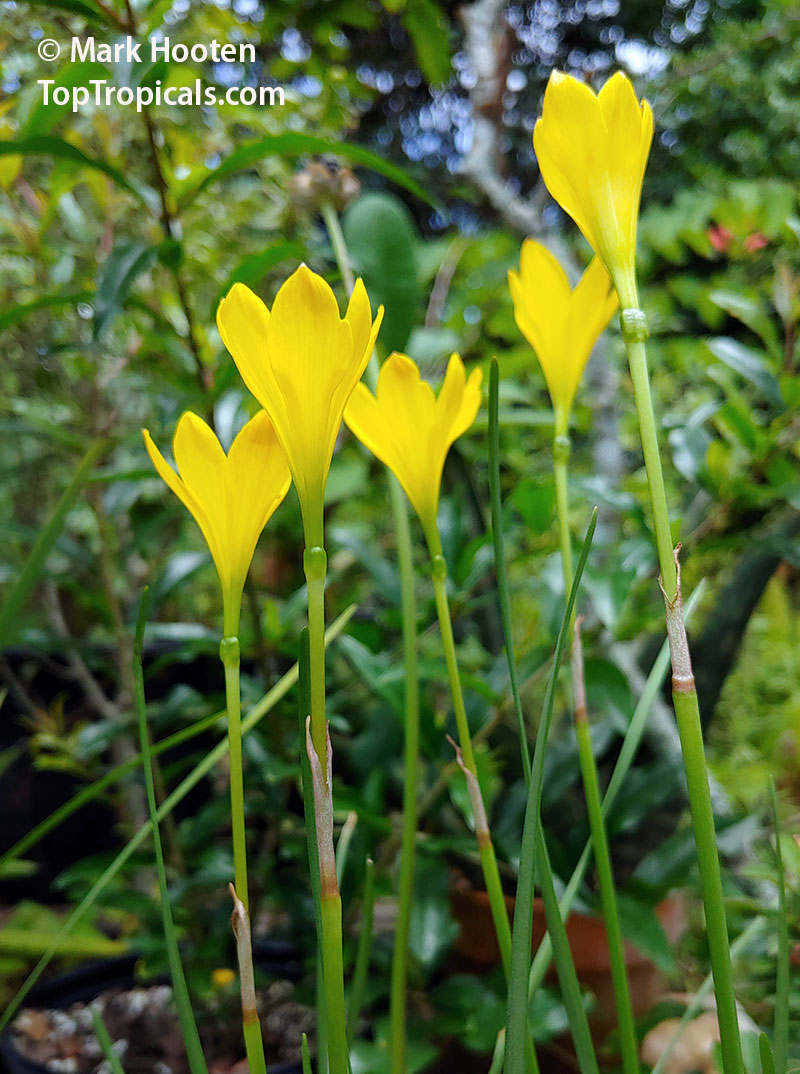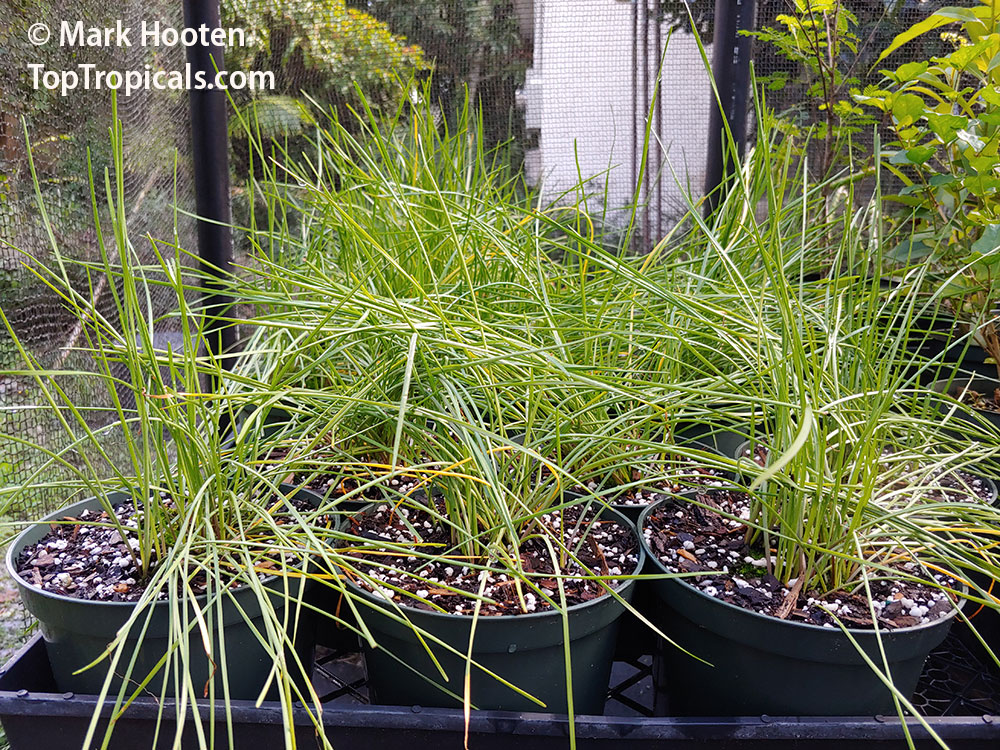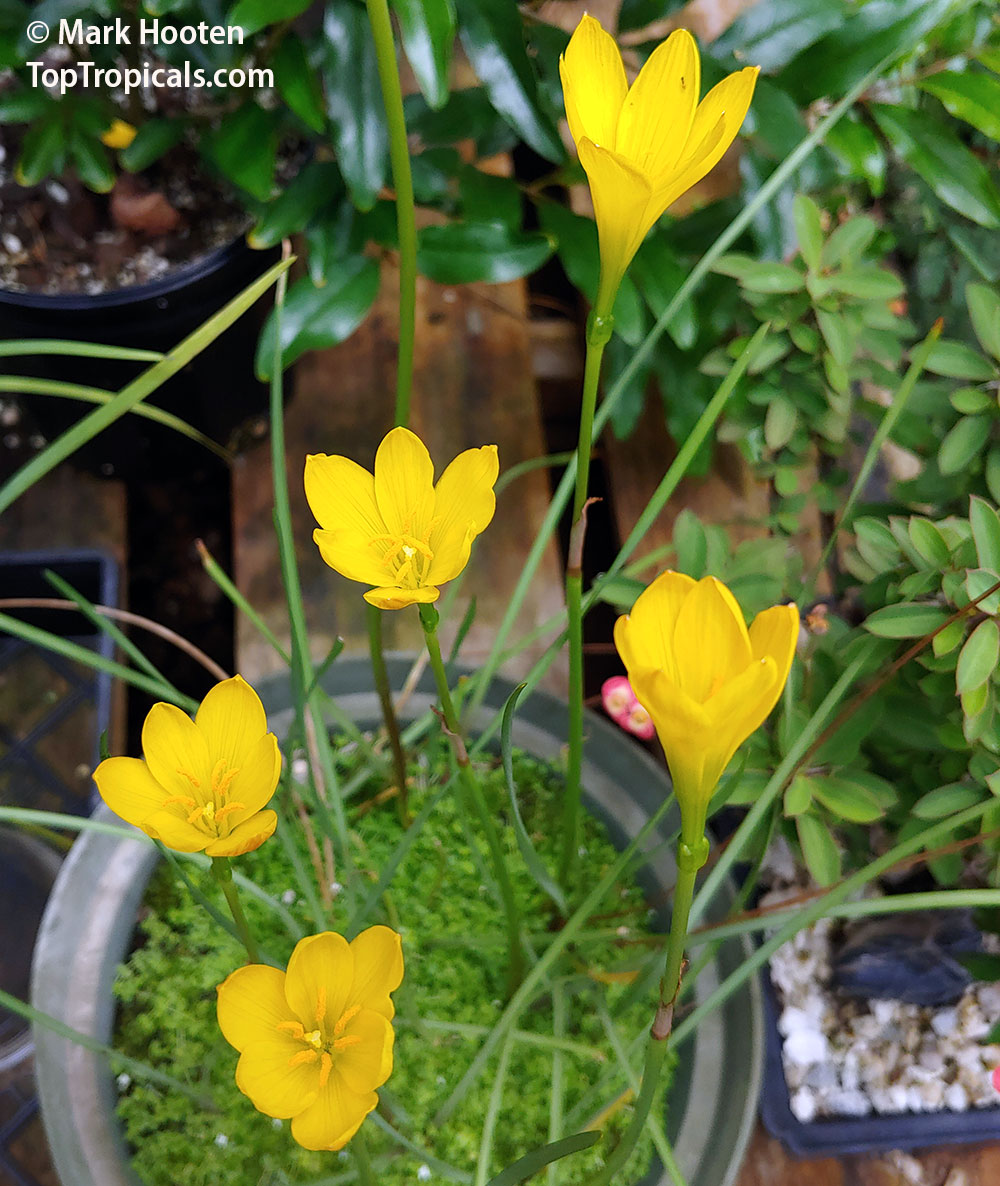Zephyranthes pulchella - Sunny Face of incredible Magic Lily
by Mark Hooten, the Garden Doc
 About the Author
About the Author
Mark Hooten has been fascinated by horticulture since childhood, with interests including tropical fruits, cacti, ethnobotany, entheogens, and variegates. Having been employed in both FL and CA by botanical gardens and specialist nurseries as horticulturist, manager, propagator, and consultant, he is happy to speak with fellow plant worshipers at TopTropicals Nursery. Mark is currently busy writing a volume on the complicated history of croton varieties. His passions are plants, cats, and art of painting.

Zephyranthes pulchella is a true rare plant collector item. Common names include - Fairy Lily, Zephyr Lily, Magic Lily, Atamasco Lily, Rain Lily...
These wonderful little lilies came as a gift from a botanist studying the native plant life of Southern Texas nearly 30 years ago. Originally grown from seeds collected for a doctoral thesis, near the town of Refugio (along the Southern Texas Gulf Coast, just north of Corpus Christi), this brilliant, fetching tiny lily really deserves to be more well known.
The thin, grass-like leaves grow from small onion-like bulbs that produce an abundance of shockingly bright cadmium-yellow flowers which greatly resemble those of certain yellow Crocus, except on longer stems.

If given a good amount of actual sunlight during the day (all day if fine), these will flower sporadically yet frequently from April thru September. They never want to have dry soil, and will go temporarily dormant (leafless) in the winter if they dry out....which they do in habitat. However, here in So. Florida, when kept nicely watered and fed, they keep their super glossy leaves year around and are very robust. Flowering for at-least 6 months out of the year, this is a most charming, rare species.

There is one caveat which goes along with this incredible species... it can be wonderful, depending upon a growers situation... which is that this species is "apomictic". This means that they produce seeds which do not require cross pollination, and technically are clones of each mother plant! Also meaning that EVERY flower will likely produce a small, 3-lobed seedpod, which will open to reveal a number of flat, black, papery seeds. The seeds are technically "recalcitrant", meaning that they are alive for a very brief period, probably only a day or two. So if not planted in moist soil almost immediately upon ripening, the seeds will simply dry-up and die. Yet if they fall onto moist soil around them, they likely will germinate.
However, if a person wanted to create an entire bed of them given the right climate, it could be done in a short amount of time. That would be rewarding and beautiful!
RECOMMENDED FERTILIZERS:
SUNSHINE Megaflor - Bloom Nutrition Booster
Tropical Allure - Smart-Release Booster

